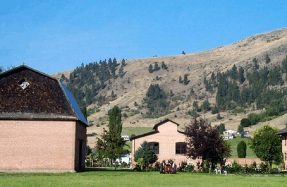
William A. White, B.A. (University of Victoria), is a Cultural Historian, traditionally trained Snuneymuxw Elder, and a cultural teacher. He recently weighed in at the public engagement session in Nanaimo for the Royal British Columbia Museum (RBCM), a process designed to gather input from across BC to plan the museum’s future. The representation of Coast Salish People in this provincial institution has been on his mind for many years—since the opening of the First Peoples galleries, on January 18, 1977. Since then, millions of people have visited this “world-class” facility, and hundreds of thousands of students have learned about Indigenous Peoples through its displays.
White worries about the ongoing and legacy impacts of their teachings about Coast Salish People in terms of their relative worth as Indigenous People on the west coast, and he urges action as new RBCM experiences are created in the coming years.
Coast Salish People missing
In 1998, I wrote a very brief paper that compared and contrasted the very small display case accorded the Coast Salish People at the Royal British Columbia Museum and the display cases of its neighbours, identified as the Nuu-chah-nulth, Ts’msyen, and Haida Peoples. The Coast Salish case used to sit just to the right of the Mungo Martin longhouse1 in the First Peoples Gallery, after eight or ten major display cases housing Kwakwākā’wakw and Haida materials. Immediately indisplay case were a number of full-size totem poles and at least five or six display areas dedicated to northern cultures.


